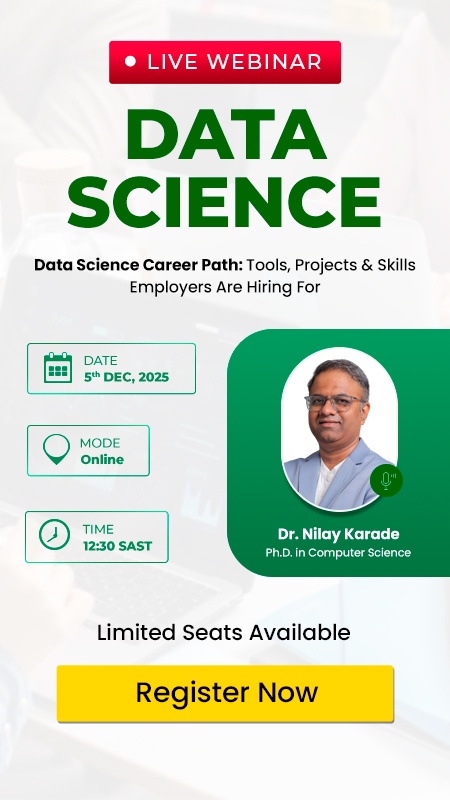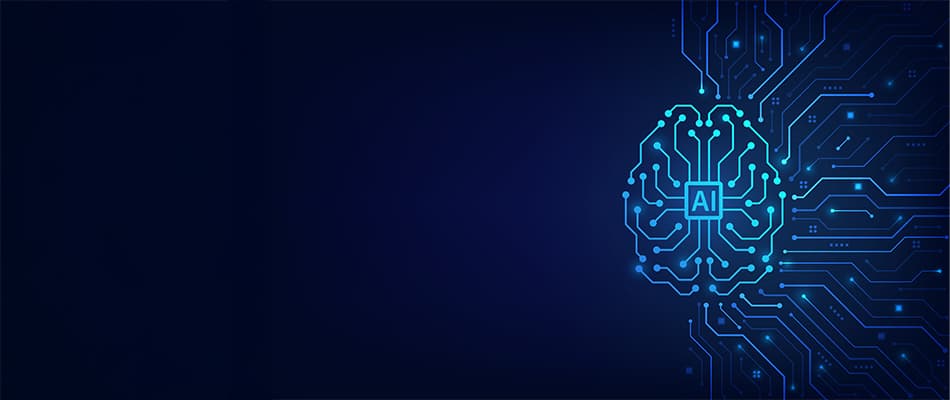Data Architect Interview Questions and Answers- Improve your Skills
A Data Architect plays an important role in analysing and managing an organisation’s data infrastructures. They create blueprints for databases and data systems to ensure data is organised and easily available. Their role includes planning the connection of different data sources and ensuring data accuracy and security.
To become a data architect, you must have the basic concepts of data science and advanced technical skills. In this article, we have given a detailed list of 40 interview questions and answers. These questions and answers will help you understand the key areas of data architecture, such as data models, data quality, data security, etc. Learning these questions will help you be well-prepared to show your skills and get a job as a data architect.
Data Architect Interview Questions with Answers
Here is a list of 40 Data Architect interview questions and answers about Data Architect. Check them to build your foundation in the field in question.
Question No 1. What is the role of a Data Architect?
Answer: A Data Architect designs and manages an organisation’s data structures. This includes creating data models, defining data standards, and ensuring data security and quality. They work with stakeholders to understand data needs and data patterns. Data Architects also manage data storage, recovery, and integration processes to support business goals.
Question No 2. What is data modelling, and why is it important?
Answer: Data modelling is the process of creating a visual representation of a data system. It helps define data elements and their connections. This is important for ensuring data consistency, improving data quality, and facilitating communication between technical and non-technical stakeholders. Proper data modelling helps in efficient database design and prevents data redundancy.
Question No 3. Can you explain the difference between a logical data model and a physical data model?
Answer: The differences between the Logical data model and the Physical data model have been explained in the following table.
| Logical data model | Physical data model |
| Logical data models are abstract and focus on the high-level design and relationships between data. | Physical data models are concrete and detail the actual implementation in a database. |
| Logical data models define entities, attributes, and relationships. | Physical data models define tables, columns, and keys. |
| Logical data models are independent of any database management system (DBMS). | Physical data models are specific to a particular DBMS and include details like storage and indexing. |
| Logical data models are used to plan and understand data requirements. | Physical data models are used to build and optimise the database for performance. |
Question No 4. How do you ensure data quality in your projects?
Answer: Ensuring data quality includes setting up data validation rules, cleaning data to remove inconsistencies, and implementing data profiling tools. Regular audits and data quality assessments help identify and resolve issues. Using standardised data formats and consistent data entry procedures also contributes to maintaining high data quality.
Question No 5. What is a data warehouse, and how does it differ from a database?
Answer: A data warehouse is a centralised vault designed for reporting and analysis. It holds old data from various sources and is optimised for read operations and complex queries. On the other hand, a database is used for day-to-day operations. It supports both read and write operations and is often used for transactional processing.
Question No 6. Explain the concept of ETL.
Answer: ETL stands for Extract, Transform, Load. “Extract” means recovering raw data from various sources like databases, files, or APIs. “Transform” refers to cleaning and converting the data into a suitable format. “Load” is the process of transferring the transformed data into a target system, such as a data warehouse or database. ETL helps consolidate data, improve data quality, and prepare data for analysis.
Question No 7. What do you consider the most important skills for a Data Architect?
Answer: The most important skills for a Data Architect are data modelling, database design, ETL processes, big data technologies, and cloud platforms. Soft skills like communication, problem-solving, and project management are also important. These skills contribute to effective data architecture.
Question No 8. What is data modelling, and why is it important in data architecture?
Answer: Data modelling involves creating visual representations of data structures. It’s crucial because it helps understand data relationships, ensure data quality, and design databases that meet business requirements. Good data models lead to efficient database design and improved data management.
Question No 9. Explain the difference between conceptual, logical, and physical data models.
Answer: Conceptual models outline the high-level data connections without technical details. Logical models define the structure and relationships in more detail. Physical models specify the actual database schema, including tables, columns, and data types.
Question No 10. How do you approach designing a data model for a new project?
Answer: Start by understanding business requirements and data sources. Create a conceptual model to outline key entities and relationships. Refine it into a logical model, defining attributes and relationships in detail. Finally, a physical model will be developed, optimising performance and storage.
Question No 11. What are the key differences between relational and non-relational databases?
Answer: The following table shows the differences between relational databases and non-relational databases.
| Relational databases | Non-relational databases |
| Relational databases use tables with rows and columns to store data, ensuring a structured and uniform format. | Non-relational databases, often called NoSQL databases, use various data models such as document, key-value, graph, or column-store, providing more flexibility in how data is stored and accessed. |
| Relational databases require a predefined schema that defines the structure of the data, including the relationships between tables. | Non-relational databases are schema-less, allowing for dynamic changes to the data structure without affecting existing data. |
| Relational databases typically scale vertically, meaning they require more powerful servers to handle increased load. | Non-relational databases are designed for horizontal scaling, allowing them to easily distribute data across multiple servers. This makes them better suited for handling large volumes of unstructured data. |
| Relational databases are ideal for applications that require complex queries and transactions, such as financial systems and enterprise applications. | Non-relational databases are better suited for applications with large-scale data and flexible data models, such as content management systems, real-time analytics, and big data applications. |
Question No 12. Can you explain the CAP theorem and its implications for database design?
Answer: The CAP theorem states that a distributed database system cannot simultaneously provide all three guarantees: Consistency (C), Availability (A), and Partition Tolerance (P). Consistency means all nodes see the same data at the same time. Availability ensures that every request receives a response, even if some nodes are down. Partition Tolerance means the system continues to function despite network partitions. This theorem implies that database design must prioritise two of these guarantees over the third, affecting choices between consistency and availability based on the application’s needs.
Question No 13. What are some common challenges when working with distributed databases?
Answer: Some common challenges include data consistency, latency, network partitions, and managing distributed transactions. Ensuring data integrity across nodes, handling replication and synchronisation, and maintaining performance are critical issues that require careful planning and robust solutions.
Question No 14. What are some best practices for designing a data warehouse schema?
Answer: Best practices include using star or snowflake schemas to organise data, ensure data normalisation, and optimise query performance. Focus on scalability, maintainability, and data integrity. Employ ETL processes to transform and load data efficiently and regularly update the schema based on evolving business needs.
Question No 15. What is Apache Hadoop?
Answer: Apache Hadoop is an open-source framework designed for processing large datasets. It consists of two main components: Hadoop Distributed File System (HDFS) for storage and MapReduce for processing. HDFS stores data in multiple nodes. MapReduce, on the other hand, processes data in parallel, breaking tasks into smaller subtasks. Hadoop is widely used for big data analytics.
Question No 16. What is Apache Spark?
Answer: Apache Spark is an open-source computing system that provides an advanced analytics engine for big data processing. It supports various data processing tasks, including batch processing, machine learning, and graph processing. Spark uses in-memory computing, which makes it significantly faster than traditional disk-based processing systems like Hadoop. Spark’s components include Spark SQL, Spark Streaming, MLlib, and GraphX, which enhance its functionality for different use cases.
Question No 17. Explain the difference between OLAP and OLTP.
Answer: Check the differences between OLAP and OLTP below.
| OLAP | OLTP |
| OLAP (Online Analytical Processing) is designed to analyse and query large volumes of data, focusing on complex calculations, trend analysis, and data mining. | OLTP (Online Transaction Processing) is designed to manage transactional data, focusing on insertions and updates. |
| OLAP handles fewer transactions that are more complex and time-consuming, often involving large-scale data aggregation. | OLTP handles a large number of short, simple transactions, ensuring data integrity and quick processing times. |
| OLAP is typically used for business intelligence, reporting, and decision support systems. | OLTP is used for day-to-day operations such as order entry, retail sales, and banking transactions. |
Question No 18. What is data governance?
Answer: Data governance is the framework of policies and procedures for managing an organisation’s data assets. It ensures data quality, consistency, and security in the organisation. Data governance ensures rules for data access, usage, and compliance with regulations. It also includes monitoring and auditing data practices. Effective data governance ensures better decision-making and risk management.
Question No 19. What is data lineage?
Answer: Data lineage tracks the flow of data from its origin to its final destination. It documents the data’s journey, including transformations, processes, and storage locations. Data lineage provides transparency and traceability. It helps understand how data is derived and modified. It also helps fix data issues by highlighting where errors occur in the pipeline. Ensuring data lineage supports regulatory compliance by demonstrating data handling practices. It also improves data governance and facilitates better decision-making by providing a clear data history.
Question No 20. How do you handle the storage and processing of large-scale datasets?
Answer: I will use distributed storage solutions like HDFS, Amazon S3, or Google Cloud Storage to handle large-scale datasets. For processing, I use parallel computing frameworks like Apache Spark or Apache Flink, which enable efficient handling of vast data volumes. I also implement data partitioning and indexing to enhance access speeds and employ robust ETL pipelines for data ingestion and transformation.
Question No 21. What are the advantages and disadvantages of using cloud-based big data solutions?
Answer: Discuss the benefits, such as scalability, cost-effectiveness, flexibility, and ease of integration with other services. Address potential disadvantages like dependency on internet connectivity, security concerns, and possible higher costs for large-scale, long-term storage and processing needs.
Question No 22. What experience do you have with big data technologies such as Hadoop and Spark?
Answer: I have extensive experience using Hadoop for distributed storage and batch processing of large datasets. With Spark, I’ve implemented real-time data processing and in-memory computations, significantly improving processing speed. I’ve utilised these technologies in projects involving large-scale data analytics and machine learning pipelines, focusing on performance optimisation and scalability.
Question No 23. What is data integration, and why is it important?
Answer: Data integration is the process of combining data from different sources to provide a unified view. It is important for holistic data analysis, ensuring consistency, and improving decision-making. Effective data integration helps organisations break down data silos, enhance data quality, and streamline operations by providing a single source of truth.
Question No 24. Can you describe a project where you integrated data from multiple sources?
Answer: In a recent project, I integrated data from multiple sources, including SQL databases, NoSQL databases, and third-party APIs, for an analytics platform. I used ETL tools like Apache Nifi and Talend to extract, transform, and load data. Other challenges included ensuring data consistency and real-time updates, which I addressed using change data capture techniques and real-time streaming frameworks.
Question No 25. What tools and techniques do you use for data integration?
Answer: I use various data integration tools, such as Apache Nifi, Talend, and Informatica, for ETL processes. Techniques include batch processing, real-time streaming, and data virtualisation to ensure seamless data flow. I also use data quality tools to validate and cleanse data during integration, ensuring accuracy and consistency.
Question No 26. What is data governance, and how do you implement it in an organisation?
Answer: Data governance includes reviewing policies and procedures to manage data’s availability, usability, integrity, and security. Implementation includes creating data stewardship roles, defining data standards, and setting up a governance framework. I also use data cataloguing and metadata management tools to enhance data transparency and ensure compliance with regulations.
Question No 27. How do you ensure data security and compliance with regulations?
Answer: Ensuring data security and compliance involves implementing robust access controls, encryption, and regular security audits. I follow industry standards and regulatory requirements like GDPR or HIPAA, incorporating data masking and anonymisation techniques. Continuous monitoring and incident response plans are also in place to address potential security breaches promptly.
Question No 28. What experience do you have with cloud platforms like AWS, Azure, or Google Cloud?
Answer: I have significant experience with cloud platforms, including AWS, Azure, and Google Cloud. I use their services for data storage, processing, and analytics. On AWS, I’ve used S3, Redshift, and EMR; on Azure, I’ve worked with Data Lake, Synapse, and Databricks; on Google Cloud, I’ve leveraged BigQuery and Dataflow. These platforms have scalable and efficient data solutions for various projects.
Question No 29. How do you ensure data security and compliance in the cloud?
Answer: In the cloud, I ensure data security by implementing IAM (Identity and Access Management), data encryption at rest and in transit, and regular security assessments. I maintain compliance by following regulatory standards, using cloud-native security tools, and continuously monitoring for vulnerabilities or breaches. Additionally, I use data residency controls and perform regular compliance audits.
Question No 30. What are the benefits and challenges of using cloud-based data architectures?
Answer: Cloud-based data architectures provide benefits such as on-demand scalability, cost-efficiency, and ease of integration with other cloud services. They facilitate rapid deployment and innovation with minimal infrastructure overhead. However, challenges include managing data security, potential vendor lock-in, and ensuring consistent performance and compliance across multi-cloud or hybrid environments.
Question No 31. What is data governance, and why is it important?
Answer: Data governance establishes policies, standards, and procedures to ensure proper data management across the organisation. Maintaining data quality, ensuring data security, and complying with regulatory requirements is crucial. Effective data governance supports accurate decision-making and operational efficiency from data-related risks and legal issues.
Question No 32. How do you approach integrating different data sources?
Answer: I begin by assessing each source’s data formats, schemas, and quality to understand compatibility issues. Then, I design an ETL (Extract, Transform, Load) process using tools like Apache Nifi, Talend, or custom scripts to standardise and merge the data. I ensure data cleansing and validation are part of the process to maintain consistency. Metadata management is also crucial for tracking the data lineage and ensuring transparency. Throughout, I emphasise scalability and flexibility to accommodate future data sources.
Question No 33. What are the challenges of integrating legacy systems with modern data architectures?
Answer: Legacy systems often use outdated technologies and data formats, creating compatibility issues with modern architectures. Data quality may be inconsistent, requiring extensive cleansing and transformation. Legacy systems ‘ performance limitations and scalability issues may affect the overall architecture. Security vulnerabilities in legacy systems also cause risks during integration. Overcoming these challenges requires careful planning, robust middleware solutions, and iterative testing.
Question No 35. How do you ensure interoperability between various data systems?
Answer: Ensuring interoperability includes using standard data formats and protocols, such as JSON, XML, and RESTful APIs, to facilitate data exchange. Implementing data integration tools and middleware that support multiple data sources and formats is essential. I also prioritise using open-source technologies and adhering to industry standards. Data mapping and transformation processes are designed to align different data models. Regular compatibility testing ensures systems can communicate effectively. Continuous monitoring and adjustments are made to maintain seamless interoperability as systems evolve.
Question No 36. What are the best practices for data security in a data architecture?
Answer: Implementing strong access controls using IAM (Identity and Access Management) to restrict data access based on roles is crucial. Data encryption, both at rest and in transit, ensures data remains secure throughout its lifecycle. Regular security audits and vulnerability assessments help identify and mitigate potential risks. Using data masking and anonymisation techniques protects sensitive information. Compliance with relevant regulations and industry standards forms the foundation of the security strategy.
Question No 37. How do you ensure compliance with data protection regulations like GDPR or CCPA?
Answer: Ensuring compliance begins with understanding the specific requirements of regulations like GDPR or CCPA. Data governance frameworks are established to manage data lifecycle and enforce policies. Data anonymisation and pseudonymisation techniques are used to protect personal data. Regular audits and assessments are conducted to ensure adherence to regulatory standards. Data subject rights, such as the right to access and delete personal data, are implemented and maintained. Continuous training and awareness programs are conducted to keep the team updated on compliance requirements.
Question No 38. What measures do you take to secure data in transit and at rest?
Answer: Data encryption is the primary measure to secure data both in transit and at rest. For data in transit, I use secure communication protocols like TLS/SSL to protect data as it moves between systems. At rest, data is encrypted using strong encryption standards such as AES-256. Access controls and authentication mechanisms restrict unauthorised access to data storage. Regular security audits and monitoring help identify and mitigate potential vulnerabilities. Data integrity checks ensure data has not been tampered with during transit.
Question No 39. How do you stay updated with the latest trends and technologies in data architecture?
Answer: I stay updated by following industry-leading publications, blogs, and forums focused on data architecture and related technologies. Participating in webinars, conferences, and workshops provides insights into the latest trends and best practices. Regularly attending training sessions and earning certifications in new technologies ensures hands-on experience. Subscribing to newsletters and research papers from renowned organisations like Gartner keeps me informed about emerging technologies. Experimenting with new tools and technologies in personal or pilot projects helps evaluate their potential for real-world applications.
Question No 40. What is your opinion on the future of data architecture?
Answer: The future of data architecture will likely see increased adoption of cloud-native and hybrid solutions, which provide flexibility and scalability. Data architectures will become more decentralised for real-time processing and analytics closer to the data source. The integration of AI and machine learning will automate data management tasks and enhance decision-making capabilities. Data privacy and security will remain paramount, driving advancements in encryption and compliance technologies. Overall, data architectures will evolve to support the growing demands for speed, efficiency, and data-driven insights.
In-demand Data Architect Job Profiles for Freshers
A Data Architect analyses and manages an organisation’s data infrastructures. This includes designing and implementing data models and databases, ensuring data quality, and developing ETL processes. Several in-demand job profiles offer exciting opportunities for freshers to start careers in this field. Those profiles include data analysts, ETL developers, data engineers, business intelligence (BI) developers, and more.
Junior Data Architects design, develop and maintain data pipelines to collect, transform, and store large volumes of data. They use tools like SQL, Python, Hadoop, Spark, etc. Business Intelligence (BI) Developers transform data into actionable insights by creating dashboards, reports, and data visualisation tools. They use BI platforms such as Tableau or Power BI. Data Analysts and ETL Developers work on data extraction, transformation, loading, and analysis, providing a solid foundation for a future career in data architecture. ETL Developers use tools like Talend or Informatica to ensure data is accurately extracted, properly transformed, and efficiently loaded.
Enrol in Digital Regenesys’ Data Science Course
Digital Regenesys’ 30-week Data Science Course will help you boost your skills in the Data Architect field. You can enrol in the course for just R45,344 in South Africa. The course offers Python, R, SQL, Spark NLP, Power BI, Tableau, etc. Learn from world-class faculty and industry experts with over 10+ years of experience. Our course offers international certification, global exposure, and career counselling. 100,806+ students from the USA, South Africa, Nigeria, Kenya, Uganda, Tanzania, and India have already enquired about the course. Enrol now and start your journey towards becoming a data science expert. Download our brochure and explore the world of data science with us!
In conclusion, Data Architect offers various in-demand job profiles for freshers like Data analysts, ETL Developers, Data Engineers, Business Intelligence (BI) Developers, etc. These roles include designing and implementing data models and databases, ensuring data quality, and developing ETL processes. The demand for skilled Data Architects is rising with the growing importance of data analysis in businesses. Digital Regenesys offers a comprehensive curriculum to improve the skills in this field. Digital Regenesys also offer an online learning approach with the tools required to succeed in the dynamic field of Data Architect.
Data Architect Interview Questions – FAQs
1) What is the role of a Data Architect?
A Data Architect designs and manages data structures, ensuring data is organised, secure, and accessible.
2) What is data modelling?
Data modelling creates visual representations of data systems to define data elements and their relationships.
3) How does a data warehouse differ from a database?
A data warehouse is used for reporting and analysing historical data, while a database is used for daily operations.
4) What is ETL?
ETL stands for Extract, Transform, and Load. It is a process for consolidating data from various sources.
5) What tools are used for data integration?
Tools like Apache Nifi, Talend, and Informatica are used for data integration.
6) How do you ensure data security and compliance?
Implement access controls, encryption, and regular audits to ensure data security and regulatory compliance.
7) What experience is valuable for a Data Architect?
Experience with data technologies like Hadoop and Spark, data integration, and cloud platforms is valuable.
8) What career opportunities are available for fresher Data Architects?
Freshers can start as Data Analysts, ETL Developers, Data Engineers, or Business Intelligence (BI) Developers.














